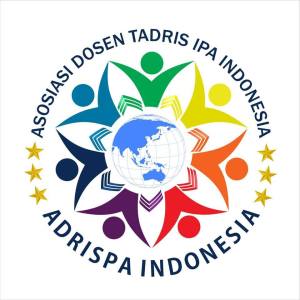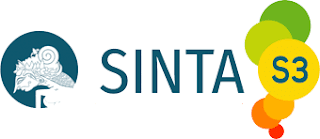THE EFFECTIVENESS OF THE SOCIO-SCIENTIFIC BASED CIRC (COOPERATIVE, INTEGRATED, READING AND COMPOSITION) MODEL ON STUDENTS' CURIOSITY
DOI:
https://doi.org/10.21154/insecta.v4i2.7600Keywords:
CIRC models, Socio-scientific approach, CuriosityAbstract
One of the characters that must be developed in students is curiosity, namely the desire to know more deeply and broadly about something that is learned, seen or heard. This research aims to determine the effectiveness of the socio-scientific based CIRC model on Students’ Curiosity. The CIRC model is cooperative learning that integrates reading and writing activities using a socio-scientific approach which is new to research. This research uses a quasi-experimental quantitative method. The sample consisted of 25 students as the experimental class and 25 students as the control class. Data collection techniques use tests and observation sheets which are analyzed descriptively quantitatively and inferential statistics. The results of the independent sample t-test produce a P-Value of 0.000, if the P-Value <α = 5% (0.05), then H0 is rejected, meaning there is a significant difference between the curiosity of experimental class and control class students. The results of the one tailed t-test produced a P-Value of 0.000 so that H0 was rejected and the estimated value for difference was 10.80, so the curiosity of experimental class students was better than that of the control class. The ANCOVA test shows a significance of 0.000<α=(0.05), meaning that the socio-scientific based CIRC model is declared effective in increasing curiosity. It can be concluded that the curiosity of students who use the socio-scientific based CIRC model is more effective than those who use the socio-scientific based non CIRC model.References
Abudulbouh, M. A. (2016). The Relationship Between The Forms of Family Upbringing and Curiosity: A Study on Primary School Students in Zarqa First Directorate of Education in Jordan. International Journal of Education and Research, 4(1).
Ainia, D. K. (2020). Merdeka Belajar dalam Pandangan Ki Hadjar Dewantara dan Relevansinya bagi Pengembangan Pendidikan Karakter. Jurnal Filsafat Indonesia, 3(3), 95”“101.
Almulla, M. (2018). Investigating teachers’ perceptions of their own practices to improve students’ critical thinking in secondary schools in Saudi Arabia. International Journal of Cognitive Research in Science, Engineering and Education (IJCRSEE), 6(3), 15”“27.
Arianto, H., & Fauziyah, H. N. (2020). Students’ Response To the Implementation of Case Based Learning (Cbl) Based Hots in Junior High School. INSECTA: Integrative Science Education and Teaching Activity Journal, 1(1), 45. https://doi.org/10.21154/insecta.v1i1.2058
Arnone, M. P., Small, R. V, Chauncey, S. A., & Mckenna, H. P. (2011). Curiosity, Interest and Engagement in Technology-pervasive Learning Environments: A New Research Agenda Marilyn. Education Tech Research Dev, 181”“198.
Artinta, S. V., & Fauziah, H. N. (2021). Faktor yang Mempengaruhi Rasa Ingin Tahu dan Kemampuan Memecahkan Masalah Siswa pada Mata Pelajaran IPA SMP. Jurnal Tadris IPA Indonesia, 1(2), 210”“218. https://doi.org/10.21154/jtii.v1i2.153
Astalini, Kurniawan, D. A., Perdana, R., & Pathoni, H. (2019). Identifikasi Sikap Peserta Didik terhadap Mata Pelajaran Fisika di Sekolah Menengah Atas Negeri 5 Kota Jambi. Unnes Physics Education Journal, 8(1).
Baram-Tsabari, A. (2015). Promoting information seeking and questioning in science. In K. A. Renninger, M. Nieswandt, & S. Hidi (Eds.). Interest in Mathematics and Science Learning, pp. 15-152.
Behice, V. (2016). Influence of cooperative integrated reading and composition technique on
foreign students reading and writing skills in Turkish. Educational Research and Reviews, 11(12), 1168”“1179. https://doi.org/10.5897/err2016.2744
Borgerding, L. A., & Dagistan, M. (2018). Preservice science teachers’ concerns and approaches for teaching socioscientific and controversial issues. Journal of Science Teacher Education, 29(4), 283”“306. https://doi.org/10.1080/1046560X.2018.1440860
Brown, B. A., Reveles, J. M., & Kelly, G. J. (2005). Scientific literacy and discursive identity: A theor- etical framework for understanding science learning. Science Education, 89, 779”“802. https://doi.org/10. 1002/sce.20069
Budiani, N. A. (2019). Penerapan Model Pembelajaran CIRC (Cooperative Integrated Reading and Composition) untuk Meningkatkan Hasil Belajar PPKn. Journal of Education Action Research, 3(3), 299. https://doi.org/10.23887/jear.v3i3.19475
Cross, D., Taasoobshirazib, G., Hendricksc, S., & Hickey, D. T. (2008). Argumentation: A Strategy for Improving Achievement and Revealing Scientific Identities. In Tern Atio Nat ,Journ Al of Science Education, 30(6), 837””861.
Damayanti, A. P., Yuliejantiningsih, Y., & Maulia, D. (2021). Interaksi Sosial Teman Sebaya Terhadap Motivasi Belajar Siswa. Jurnal Penelitian Dan Pengembangan Pendidikan, 5(2), 163”“167.
David, M., Susanti, D., & Kurniasih, R. (2020). Pedagogical Use of Dramatic Performance Through Science Subject for Peace Education in Paraguay. INSECTA: Integrative Science Education and Teaching Activity Journal, 1(2), 110”“120. https://doi.org/10.21154/insecta.v1i2.2182
Dinkha, J. (2008). Effects of Character Education on the Self-esteem of Intellectually Able and Less Able Elementary students in Kuwait. International Journal of Special Education, 5(4), 47”“59.
Fadhillah, N. (2018). Penerapan Cooperative Integrated Reading and Compisition ( CIRC ) dengan Media Gambar terhadap Sikap Ilmiah dan Hasil Belajar Siswa kelas IV MIN 3 Aceh Besar. Universitas Islam Negeri Ar-Raniry Darussalam-Banda Aceh.
Fauzi, A. R., Zainuddin, Z., & Atok, R. Al. (2017). Penguatan Karakter Rasa Ingin Tahu dan Peduli Sosial melalui Discovery Learning. Jurnal Teori Dan Praksis Pembelajaran IPS, 2(2), 79”“88. https://doi.org/10.17977/um022v2i22017p079
Gottfried, A. E., Preston, K. S. J., Gottfried, A. W., Oliver, P. H., Delany, D. E., & Ibrahim, S. M. (2016). Pathways from parental stimulation of children’s curiosity to high school science course accomplishments and science career interest and skill. International Journal of Science Education, 38(12), 1972”“1995. https://doi.org/10.1080/09500693.2016.1220690
Gresch, H., Hasselhorn, M., & Bögeholz, S. (2013). Training in Decision-making Strategies: An approach to enhance students’ competence to deal with socio-scientific issues. International Journal of Science Education, 35(15), 2587”“2607. https://doi.org/10.1080/09500693.2011.617789
Gupta, M., & Ahuja, J. (2014). Cooperative Integrated Reading Composition (CIRC): Impact on Reading Comprehension Achievement in English among Seventh Graders. International Journal of Research on Humanities, Arts and Literature (Impact: IJRHAL), ISSN (E): 2321-4564 & ISSN (P): 2347-45. International Journal of Research on Humanities, Arts and Literature (Impact: IJRHAL), ISSN (E): 2321-4564 & ISSN (P): 2347-4564, Impact Factor (JCC) 1.3648. Google Scholar Citations-06 (Hi-Index), 2, 37”“46.
Handoyo, S. S., Iriani, T., & Septiandini, E. (2019). Study of the Analysis on the Characteristics of Learning Style of the Students of the Vocational Education of Building Construction study program, Faculty of Engineering, Jakarta State University. 3rd UNJ. International Conference on Technical and Vocational Education and
Training, 339”“ 348.
Haryanti, N., Wilujeng, I., & Sundari, S. (2020). Problem based learning instruction assisted by e-book to improve mathematical representation ability and curiosity attitudes on optical devices. Journal of Physics: Conference Series, 1440(1). https://doi.org/10.1088/1742-6596/1440/1/012045
Hendi Ristanto, R., Zubaidah, S., Amin, M., & Rohman, F. (2018). The Potential of Cooperative Integrated Reading and Composition in Biology Learning at Higher Education. International Journal of Educational Research Review, 3(2), 50”“56. https://doi.org/10.24331/ijere.376727
Herman, B. C., Sadler, T. D., Zeidler, D. L., & Newton, M. H. (2018). A Socioscientific Issues Approach to Environmental Education. 145”“161. https://doi.org/10.1007/978-3-319-67732-3_11
Herwin, & Nurhayati, R. (2021). Measuring students’ curiosity character using confirmatory factor analysis. European Journal of Educational Research, 10(2), 773”“783. https://doi.org/10.12973/EU-JER.10.2.773
Higgins, J., & Moeed, A. (2017). Fostering Curiosity in Science Classrooms: Inquiring into Practice Using Cogenerative Dialoguing. Science Education International, 28(3), 190”“198.
Jannah, F., Fadly, W., & Aristiawan, A. (2021). Analisis Karakter Rasa Ingin Tahu Siswa pada Tema Struktur dan Fungsi Tumbuhan. Jurnal Tadris IPA Indonesia, 1(1), 1”“16.
Jatmiko, A., Maridi, & Ariyanto, J. (2013). Penerapan Model Pembelajaran Kooperatif Tipe Circ ( Cooperative Integrated Reading And Composition ) Disertai Media Komik Biologi Untuk Meningkatan Minat Belajar Siswa Dalam Pelajaran Biologi Pada Siswa Kelas VII-A SMP Negeri 1 Surakarta Tahun Pelajaran 2. Pendidikan Biologi, 5(1), 15”“25.
Kang, M. hee, Heo, H., Jo, I. H., Shin, J., & S., & J. (2010). Developing an Educational Performance Indicator for New Millennium Learners. Journal of Research on Technology in Education, 43(2), 157”“ 170.
Kolstø, S. D., Bungum, B., Arnesen, E., Isnes, A., Kristensen, T., Mathiassen, K., Mestad, I., Quale, ATonning, A. S. V, & Ulvik, M. (2006). Science Students’ Critical Examination of Scientific Information Related to Socioscientific Issues. Science Education. Science Education, 90(4), 632”“655.
Nasution, D., Harahap, P. S., & Harahap, M. (2018). Development Instrument’s Learning of Physics Through Scientific Inquiry Model Based Batak Culture to Improve Science Process Skill and Student’s Curiosity. Journal of Physics : Conference Series, 970(1).
Oktavioni, W. (2017). Meningkatkan Rasa Ingin Tahu Siswa pada Pembelajaran IPA Melalui Model Discovery Learning di Kelas V SD Negeri 186 / 1 Sridadi. Universitas Jambi.
Özden, M. (2015). Rospective Elementary School Teachers’ Views about Socioscientific Issues: A Concurrent Parallel Design Sstudy. International Electronic Journal of Elementary Education, 7(3), 333”“354.
Payadnya, I. P. A. A., & Jayantika, I. G. A. N. T. (2018). Panduan Penelitian Eksperimen Beserta Analisis Statistik dengan SPSS. Deepublish.
Presley, M. L., Sickel, A. J., Muslu, N., Merle-Johnson, D., Witzig, S. B., Izci, K., & Sadler, T. D. (2013). A Framework for Socio-scientific Issues Based Education. Science Educator, 22(1), 26”“32.
Rohmawati, E. (2018). Hubungan Motivasi Belajar Dan Rasa Ingin Tahu dengan Prestasi Belajar IPS Siswa Kelas V. Jurnal Pendidikan Guru Sekolah Dasar, 7(1).
Sari, E. N., Fauziah, H. N., Muna, I. A., & Anwar, M. K. (2021). Efektivitas Model Pembelajaran Scramble dengan Pendekatan Socio-Scientific terhadap Rasa Ingin Tahu
Peserta Didik. Jurnal Tadris IPA Indonesia, 1(3), 354”“363. https://doi.org/10.21154/jtii.v1i3.177
Skarstein, T. H., & Skarstein, F. (2020). Curious children and knowledgeable adults”“early childhood student-teachers’ species identification skills and their views on the importance of species knowledge. International Journal of Science Education, 42(2), 310”“328. https://doi.org/10.1080/09500693.2019.1710782
Stephen P. Day, T. G. K. B. (2010). Does the discussion of socio-scientific issues require a paradigm shift in science teachers’ thinking? International Journal of Science Education, pp,1.
Suhirman, S., Prayogi, S., & Asy’ari, M. (2021). Problem-Based Learning with Character-Emphasis and Naturalist Intelligence: Examining Students Critical Thinking and Curiosity. International Journal of Instruction, 14(2), 217”“232. https://doi.org/10.29333/iji.2021.14213a
Tessa J. P. van Schijndel, B. R. J. J. & M. E. J. R. (2018). Do individual differences in children’s curiosity relate to their inquiry-based learning? International Journal of Science Education, 40(9), 996”“1015. https://doi.org/10.1016/j.dr.2012.04.002
Topcu, M. S., Sadler, T. D., & Yilmaz-Tuzun, O. (2010). Preservice Science Teachers’ Informal Reasoning About Socioscientific Issues: The Influence of Issue Context. IJSE: International Journal of Science Education, 32(18), 2475”“2495. https://doi.org/10.1080/09500690903524779
Tor, N., & Gordon, G. (2020). Digital interactive quantitative curiosity assessment tool: Questions worlds. International Journal of Information and Education Technology, 10(8), 614”“621. https://doi.org/10.18178/ijiet.2020.10.8.1433
Weible, J. ., & Zimmerman, H. . (2016). Science Curiosity in Learning Environments: Developing an Attitudinal Scale for Research in Schools, Homes, Museums, and the Community. International Journal of Science Education, 38(8), 1235”“1255.
Wiyarsi, A., & Çalik, M. (2019). Revisiting the Scientific Habits of Mind cale for Socio-scientific Issues in the Indonesian Context. International Journal of Science Education, 41(17), 2430”“2447.
Zeidler, D. L., Herman, B. C., & Sadler, T. D. (2019). New directions in socioscientific issues research. Disciplinary and Interdisciplinary Science Education Research, 1(1), 1”“9. https://doi.org/10.1186/s43031-019-0008-7








